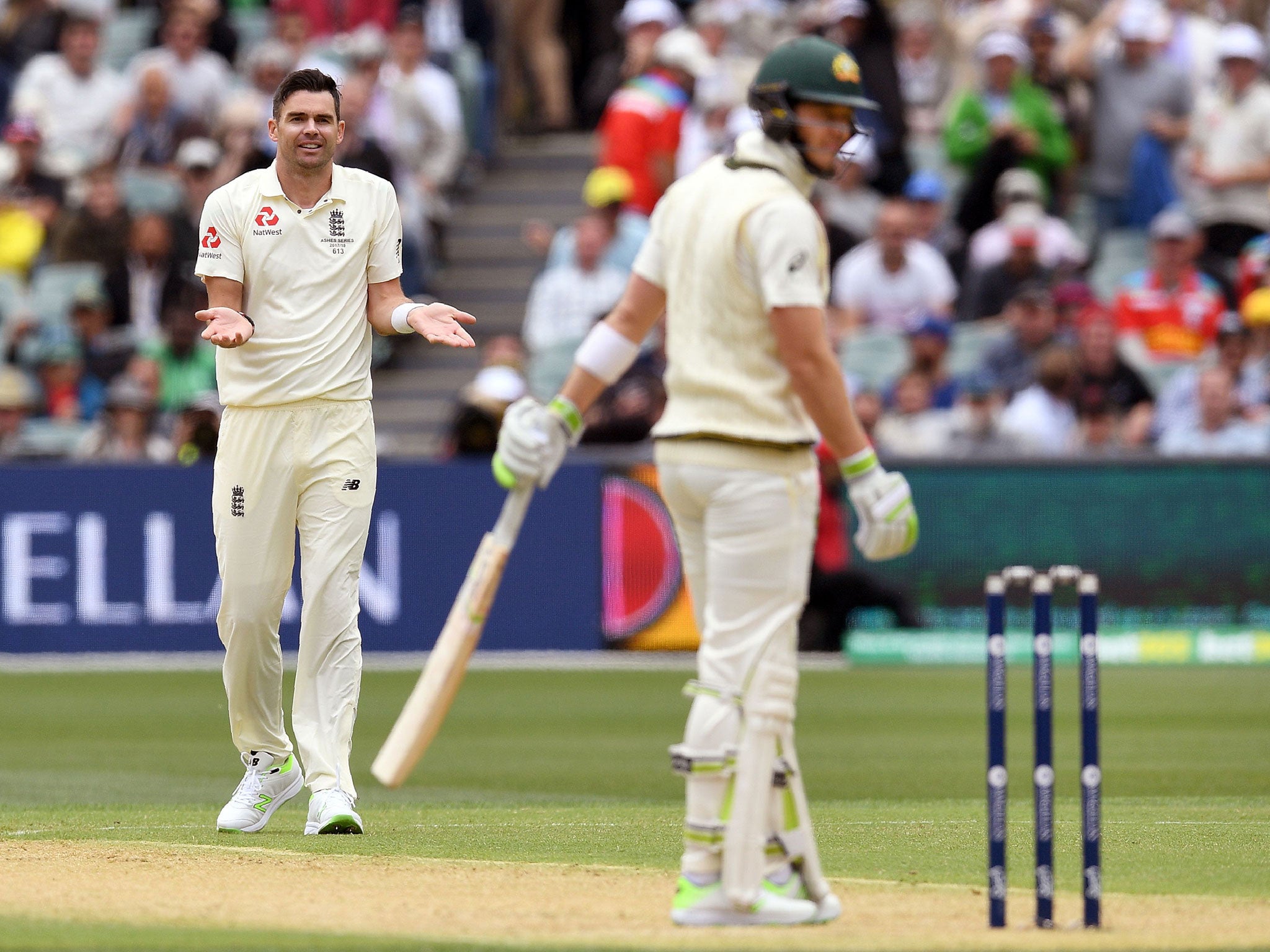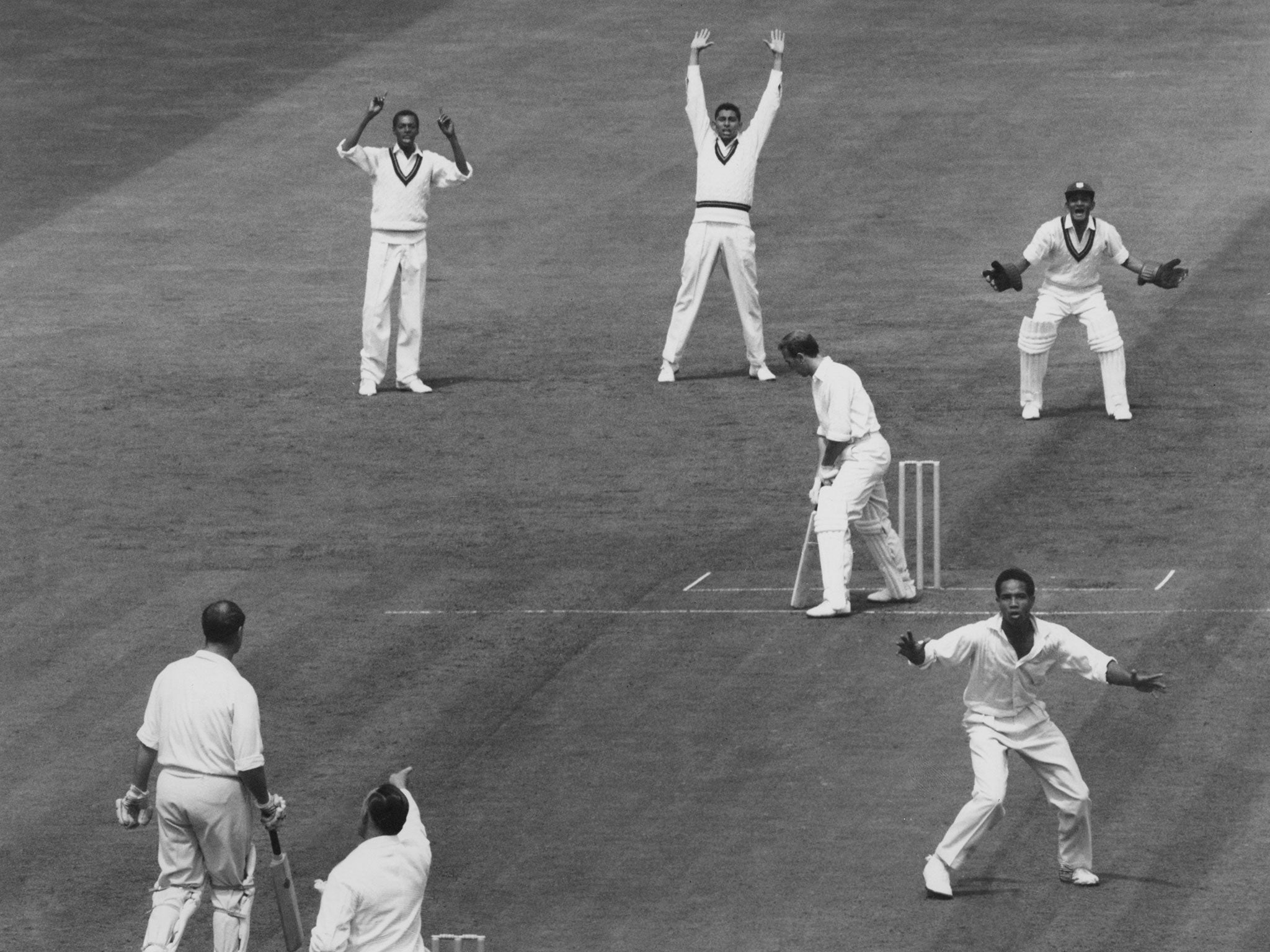LBW was conceived in a different era of cricket's history - it's time to modernise this outdated law
Traditionalists will rail against the iconoclasm of ripping up one of the oldest laws on the books. But it is a law that belongs to a very different time in the sport's history

Consider, from first principles, what the point of the LBW law is. It’s there, ostensibly, to preserve the very essence of cricket: that anybody with a bat in their hands should probably be required to use it. It’s there to stop people simply kicking the ball away, or blocking it with their legs. And it rewards the bowler for accurate bowling that deceives the batsman.
Now consider James Anderson bowling to Steve Smith on the third evening at Adelaide. Anderson is bowling around the wicket to Smith, because why not. Smith is yet to score. Anderson delivers the ball across Smith, it tails in beautifully, and Smith’s firm defensive shot is utterly beaten. A dull thud. A loud appeal. A finger raised. Smith looks disconsolate. The ball is missing leg stump, missing off stump and hitting middle about halfway up.
Except there’s a problem, which only becomes apparent when Smith calls for a review. The ball pitched fractionally outside leg-stump - we’re talking millimetres here, naked-eye stuff. And so despite Smith being roundly deceived, despite Anderson having bowled a perfect delivery that would have clean bowled Smith had he not got his legs in the way, he - and England - emerge empty-handed.
Let’s be clear about this. The decision to reprieve Smith will clearly have very little bearing on the second Ashes Test, especially as Smith was later LBW to Chris Woakes for just six. But it does raise the intriguing question of how this particular law should work, and whether - because a thing has been in place for decades and decades - it is necessarily right. As any young cricketer will tell you, a ball pitching outside leg stump cannot be given out LBW. But why?
To discover the reason for this, you need delve back through history. The current LBW law has its roots in the late 18th century, when bowling was still underarm, often rolled along bumpy ground in order to make it bounce and jump unpredictably. It was a bowlers’ game, and so the tactic of getting one’s legs in the way of the stumps was a natural response. The first LBW law appeared in 1788, allowing batsmen to be given out if they were hit on the leg by a ball travelling between wicket and wicket.
By the end of the 19th century, the game had moved on. Bowling was now overarm; the quality of pitches had improved; advances in swing and spin had created new and unpredictable angles for batsmen to deal with. And yet, unless the ball pitched in line with the stumps, batsmen could - and did - pad the ball away with impunity. There is a reason that the period between the wars is regarded as the golden age of batting.
And so in 1937 the law was changed to allow LBW if the ball pitched outside off-stump, as long it hit the pad in line with the stumps. Eighty years on, that is still pretty much the law as it stands, apart from the 1970 provision that a batsman could be out outside the off-stump if not attempting a stroke. Through uncovered pitches and one-day cricket, reverse sweeps and reverse swing, the LBW law has sailed serenely on, unchanged and largely unchallenged.

Which is strange, because if you think about it, LBW is a pretty weird concept, an almost philosophical method of dismissal. It involves the element of conjecture, a leap of faith, a stroll down the road not taken, a counterfactual reading of what would have happened, but didn’t. Even Hawk-Eye’s ball-tracking technology, which we like to tell ourselves is a faithful, infallible projection of truth, is really just a best guess. There’s nothing to say the ball wouldn’t have swung, or dipped, or been caught by a sudden gust of wind, before hitting the stumps.
It also, in certain cases, requires an umpire to intuit the batsman’s intentions, namely whether or not he or she intended to play a shot at a ball when the ball strikes the pad outside the line of off-stump. In fact, try explaining the LBW law in its entirety to someone with little or no knowledge of cricket. And then - this is the harder bit - try justifying it.
If the ball is going on to hit the stumps, why should it matter where it went on its journey? Why should it matter that it pitched outside leg stump, or hit the batsman outside the line? It’s because cricket was largely codified in Victorian Britain, and so here and there it retains certain remnants of that age: in this case, the Empire-era orthodoxy that the off-side is pure and holy, the side of gentlemen, and the leg-side is vulgar, uncouth and very possibly Bolshevik. Permit a batsman to be LBW outside leg stump, the traditionalists have always argued, and bowlers will begin to direct their line of attack accordingly. Down the leg side, with its baser, un-Christian instincts.

But let us return to the first principle of cricket: if the ball is hitting the stumps, you should be capable of hitting it. Simplifying the LBW law - if the ball would have hit the stumps, off you go - makes eminent sense for a number of reasons. It would finally remove the Kipling-era distinction between leg-side and off, and continue the work of DRS in gradually eliminating the use of the pad as a defensive ploy. It would reaffirm the two truisms of cricket: that batsmen should try and use their bats, and bowlers should try and hit the stumps. And importantly, it would be so much easier to understand.
Judging the effect such a change would have on the sport is a little like judging an LBW in real time: subjective, but possible. We might end up seeing a little more specialised leg-theory - think Mitchell Starc coming round the wicket spearing yorkers at Dawid Malan’s ankles, or Shane Warne pitching the ball four feet outside leg-stump. Scores may drop for a while. Stances will open up. Defensive technique may need to be entirely rethought. But such is the fundamental genius of cricket that eventually, you would back batsmen to adapt.
Traditionalists will rail against the iconoclasm of ripping up one of the oldest laws on the books. But it is a law written for a different era, a different century, when batsmen would genuinely worry about the ball hitting a rabbit hole, on the way to them. This is how sports grow and evolve: through evidence, through experience, and in stages. It may be too late for Anderson, but revising the LBW is simply the next stage of cricket’s development.
Join our commenting forum
Join thought-provoking conversations, follow other Independent readers and see their replies
Comments